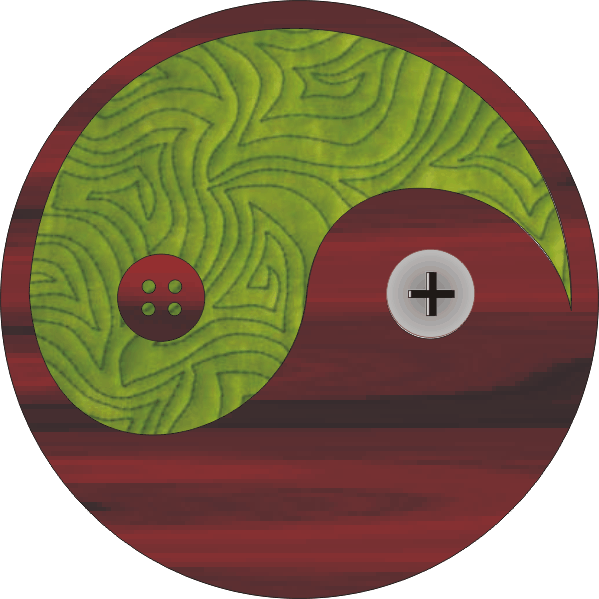I have been thinking a lot about sustainability and responsibility in making art. Since this is Earth Day weekend, it is a perfect time to reflect and write about these issues. Being responsible in material purchase and use is important to both me and Stephen so we frequently discuss ways that we can better reduce, reuse, recycle, or repurpose. That applies in our processes as well as our products.
We are involved with crafts that have a long history of thrift and practicality. Quilting and woodworking both have origins in utilitarian needs. The desire to make maximum use of limited resources contributed to using and reusing materials in different forms and combinations. Current trends towards reuse and repurposing are not something new. Early quilters, for example, used old clothes, blankets and remnants of projects to create crazy quilts or patchwork designs. American settlers used found wood or pieces from items that were damaged or no longer serving a useful purpose to make new furniture, tools or toys.
With great power (of choice) comes great responsiblity
Improved efficiency in manufacturing and access to global marketplaces have combined to dramatically change the way people can choose to craft. A quilter or fibre artist can now select brand new fabric by the bolt from large local fabric stores or online from anywhere in the world. But there is an environmental cost. Quilters favour cotton and cotton producers in the past have been notorious for use of pesticides and chemicals. Woodworkers are able to buy selections of wood from around the world. The challenge is that high demand and processing has led to more threatened species.
Increasingly, small and often unregulated providers can reach a wider market. That means we have more choices. It also means that we have more responsibility to become educated about the providers. We need to ask questions about production processes, employee protections, sustainable fibres, and long-term sustainability plans.
Ways to reduce your impact
There are steps we can all take to ensure more responsible, sustainable use of materials.
Reduce purchase of new materials
- Reduce new purchases. Try a short moratorium on buying any new material.
- Resist impulse material buying.
- Resolve to only buy what you need to finish or project or try one-out one in and use, donate or sell one item for every one you bring in (so if you buy one meter, responsibly discard one meter).
- Connect with other artists and buy, sell, trade or borrow to make use of previously purchased materials and help reduce demand for new.
- Use your scraps.

I brought home a box of discarded end-cuts of wood. Stephen laminated to make turning blanks. He’ll do a few more but we only have so many clamps. I’ll sand most of the rest down and make building blocks for our guild toy drive.
See more ideas in my post on taming your stash Use your scraps.
Buy responsibly
- Choose organic and/or local.
- Look for companies that have a sustainability plan.
- Learn about practices of suppliers. Use multiple resources to try and be sure information is current and reliable. Here are sources to help you get started:
- Ross Laird Guide to Ethical Wood Use
- Eric Meier Wood Database
- Laura Chenoweth, Ethical Textile Consultant
- FashionDex.com, sustainable contractors and suppliers
- Support companies that are responsible users and avoid those with unethical practices.
There are models for responsible textile use. Patagonia, for example, sees a role in protecting resources. “One of the most responsible things we can do as a company is to make high-quality stuff that lasts for years and can be repaired, so you don’t have to buy more of it.” Patagonia promotes environmentally responsible approaches through its Well Worn program, which “…celebrates the stories we wear, keeps your gear in action longer and provides an easy way to recycle Patagoina garments when they’re beyond repair.”
Reuse, repurpose, and recycle
- Use old clothes or home décor projects to mend or give a new life.
- Make a memory blanket from old clothes.
- Turn an unused table into a porch bench or a play table.
- Use broken legs to give an old piece of furniture a new life.
- Visit popular online sites like Pinterest to find and save inspiration for finding new uses for old pieces.
- Pass on unused / unwanted supplies to someone who will give them new life.
- Donate to local charities. Habitat for Humanity ReStores, for example, will pick up your donations and sell them in their shops. Money raised helps support building homes for local families.
Be Aware
This week, be inspired by Earth Day to examine your art practice. Ask questions. Use and reward sustainable practices.
What will you do today to improve your practices?

Recent Comments